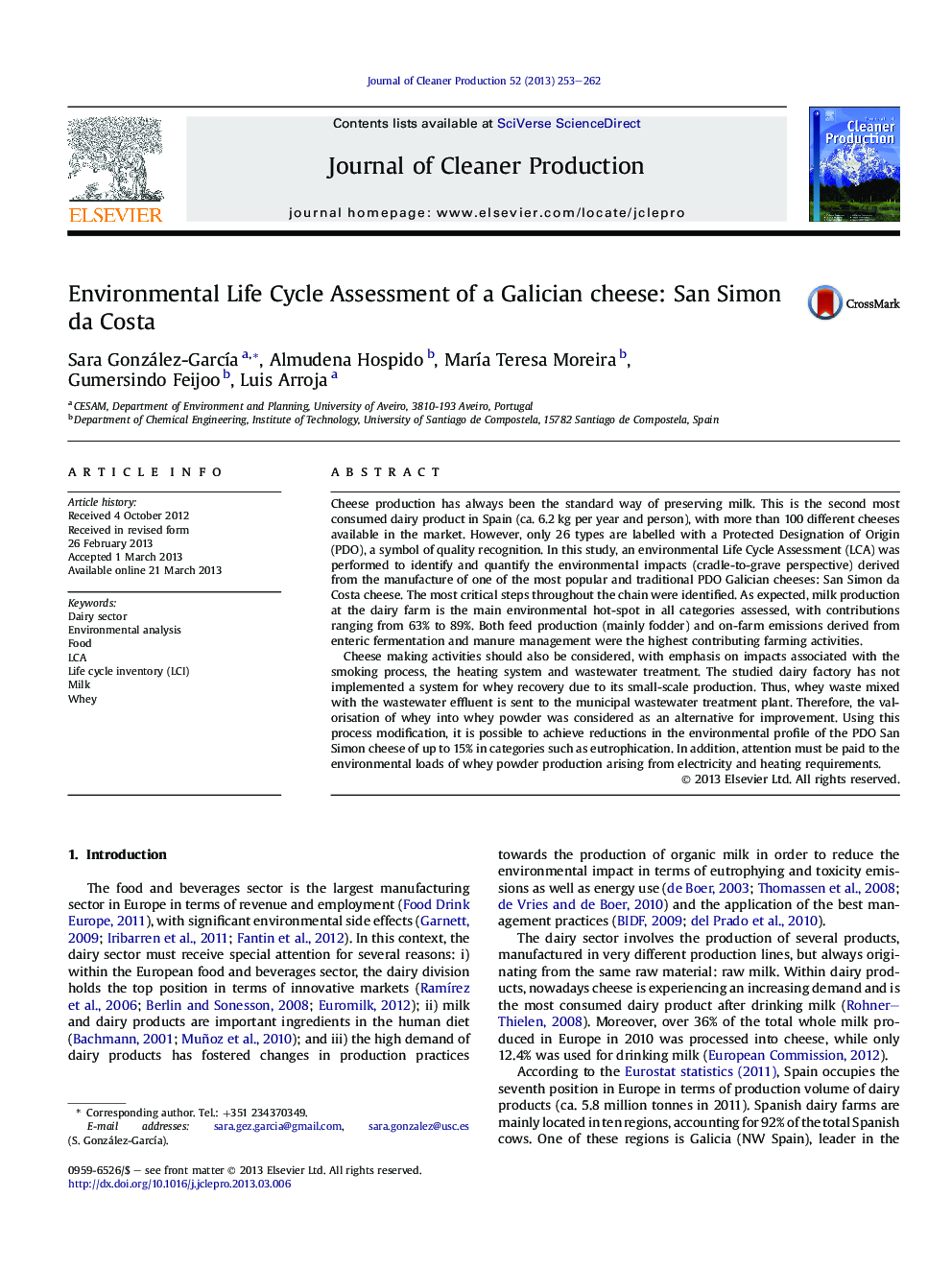| کد مقاله | کد نشریه | سال انتشار | مقاله انگلیسی | نسخه تمام متن |
|---|---|---|---|---|
| 1745244 | 1522194 | 2013 | 10 صفحه PDF | دانلود رایگان |

• Environmental evaluation of a dairy product with Protected Designation of Origin was performed.
• Raw milk production is the main environmental hotspot in almost all the categories (11 L required per kg cheese).
• Smoking process, heating system and wastewater treatment are the environmental hotspots within the cheese factory.
• The valorisation of the whey produced into whey powder was defined as an improvement alternative.
Cheese production has always been the standard way of preserving milk. This is the second most consumed dairy product in Spain (ca. 6.2 kg per year and person), with more than 100 different cheeses available in the market. However, only 26 types are labelled with a Protected Designation of Origin (PDO), a symbol of quality recognition. In this study, an environmental Life Cycle Assessment (LCA) was performed to identify and quantify the environmental impacts (cradle-to-grave perspective) derived from the manufacture of one of the most popular and traditional PDO Galician cheeses: San Simon da Costa cheese. The most critical steps throughout the chain were identified. As expected, milk production at the dairy farm is the main environmental hot-spot in all categories assessed, with contributions ranging from 63% to 89%. Both feed production (mainly fodder) and on-farm emissions derived from enteric fermentation and manure management were the highest contributing farming activities.Cheese making activities should also be considered, with emphasis on impacts associated with the smoking process, the heating system and wastewater treatment. The studied dairy factory has not implemented a system for whey recovery due to its small-scale production. Thus, whey waste mixed with the wastewater effluent is sent to the municipal wastewater treatment plant. Therefore, the valorisation of whey into whey powder was considered as an alternative for improvement. Using this process modification, it is possible to achieve reductions in the environmental profile of the PDO San Simon cheese of up to 15% in categories such as eutrophication. In addition, attention must be paid to the environmental loads of whey powder production arising from electricity and heating requirements.
Journal: Journal of Cleaner Production - Volume 52, 1 August 2013, Pages 253–262